
Cinnamon Teals
Heavy rains moved through the area overnight, and the rains forecasted for today were mostly out of the area, driven by strong winds. There was sustained 27 mph wind with higher speed wind gusts all day long. We decided to stay in the area as rain could reappear anywhere, and many of the smaller birds might be hunkered down. Our first stop was a Patagonia State Park. A Green Kingfisher and an Elegant Trogon were winter residents there. We saw several waterfowl species in the lake.

Cinnamon Teals
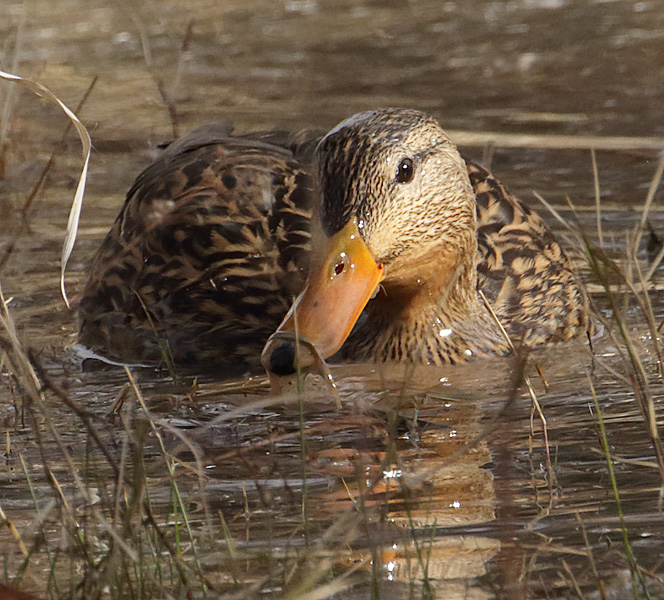
Mexican Mallard
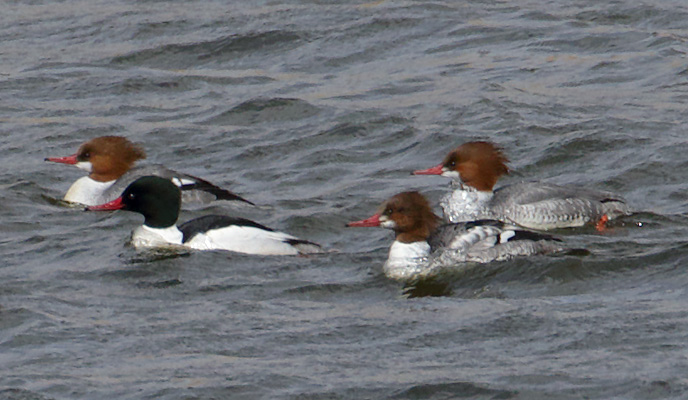
Common Mergansers
Shortly after we started the river trail hike, I saw a Red-shafted (western) Northern Flicker. As I left the trail to get closer for a better photo, a branch in the tall grasses jumped out, grabbed me by the leg, and took me to the ground. Luckily, the moist and soft, muddy ground did not break me or my camera, but unluckily, the same soft and muddy ground got me and my camera covered in mud. But nothing broken.
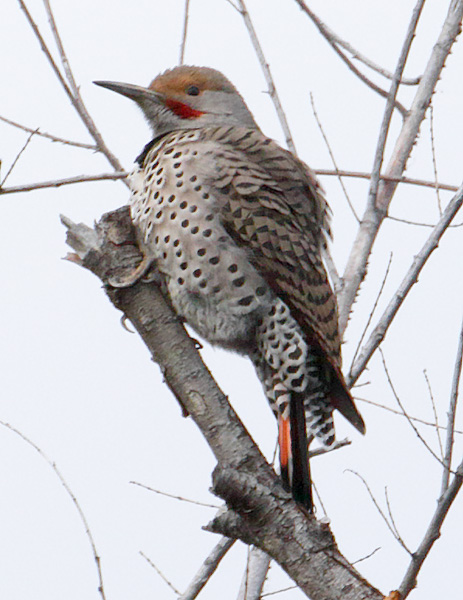
Northern Flicker
We then saw a flycatcher pumping its tail like an Eastern Phoebe. There are three winter Empidonax Flycatchers in SE Arizona, and all were potential life birds for me. As with eastern Empis, identifying them by song is the best option, but the three Arizona flycatchers do have some visible and different characteristics. Both the Gray and Dusky Flycatchers have short wingtips, but the Gray has a rather long bill and pumps its tail. The Dusky has a short bill and doesn't pump its tail. The third Empi, the Hammond's Flycatcher has a very short bill and long wingtips, an its head looks large compared with its body. Therefore, the first flycatcher we saw there was a Gray Flycatcher (life bird # 625), and a bit farther down the trail, we saw a Dusky Flycatcher (life bird # 626) that had a shorter bill and was not pumping its tail.
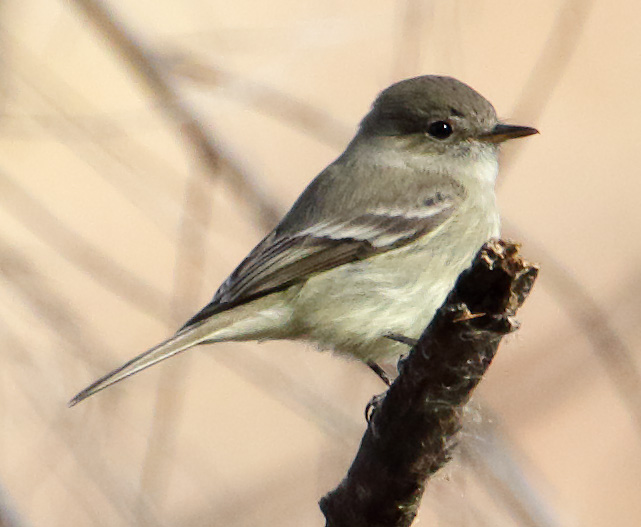
Gray Flycatcher

Dusky Flycatcher

Dusky Flycatcher
We heard some other birders say that they had seen an Eastern Phoebe on the trail, which would be quite a rarity for SE Arizona. I thought that I might have seen it as well, but when it flew and landed on another branch, I saw that it was a Black Phoebe.
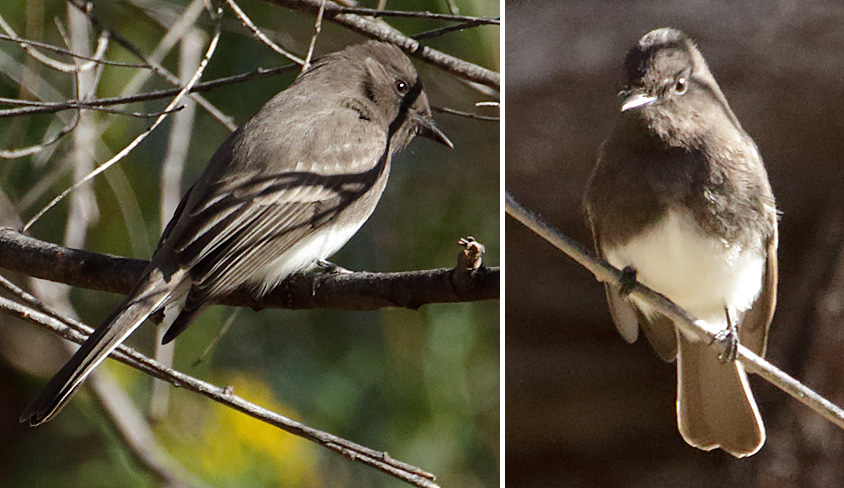
Black Phoebe
We were told that there might be Black-capped Gnatcatchers along the river trail. This species looks very similar to Blue-gray Gnatcatchers in non-breeding, winter plumage, but the longer-billed Black-capped retains a black line above the eye, whereas the Blue-gray does not. Black-tailed Gnatcatchers are also present in SE Arizona. As we continued along the trail, we got to see lots of Ruby-crowned Kinglets, Bewick's Wrens, and a few Black-capped Gnatcatchers (life bird # 627).
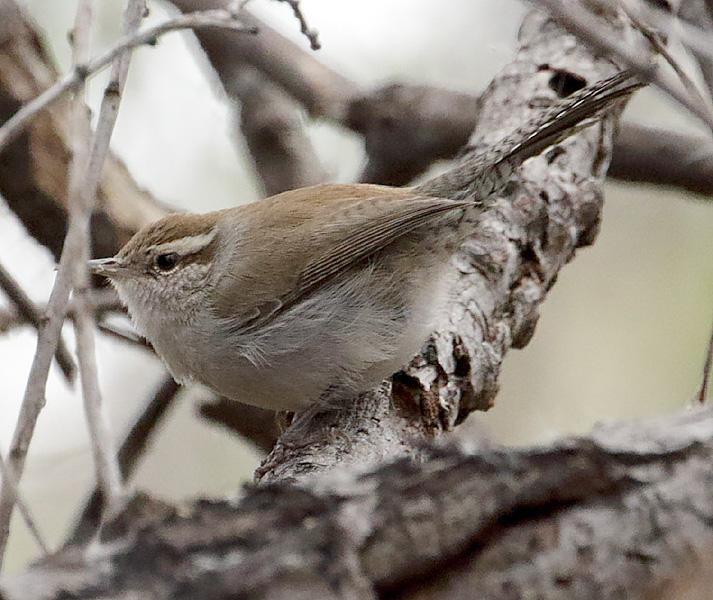
Bewick's Wren
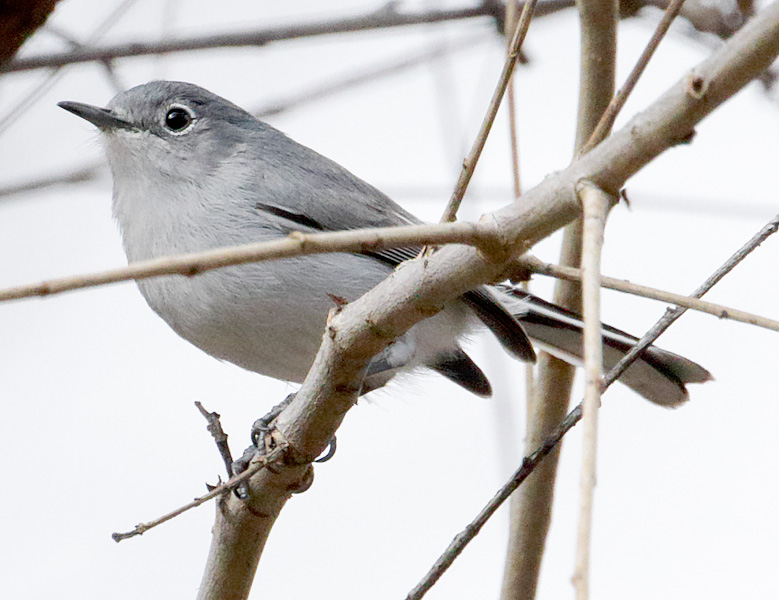
Black-capped Gnatcatcher
We never saw the Green Kingfisher or the Elegant Trogon. On the return hike, I stopped when an Orange-crowned Warbler was foraging on the ground, just off the trail. The western Orange-crowned Warblers tend to be more yellowish than those in the east.
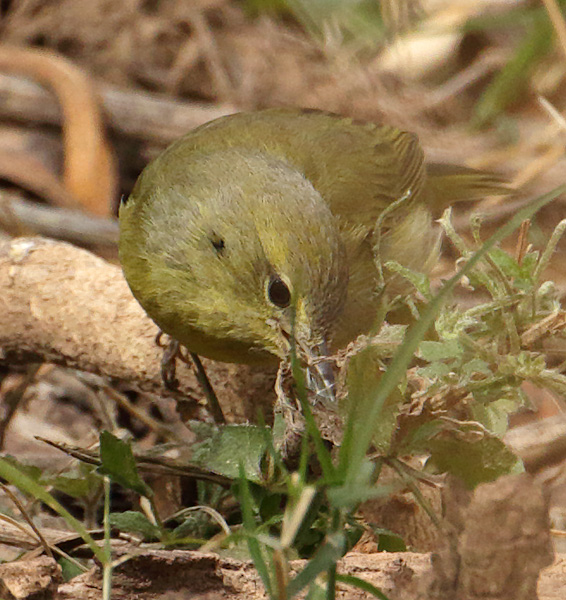
Orange-crowned Warbler

Orange-crowned Warbler
Near the end of the return hike, I saw one of three Lincoln's Sparrows seen on this trip. There was a Pacific Wren (life bird # 628) near the lake, recently split from Winter Wrens to give me another life bird. And we saw a second Orange-crowned Warbler.
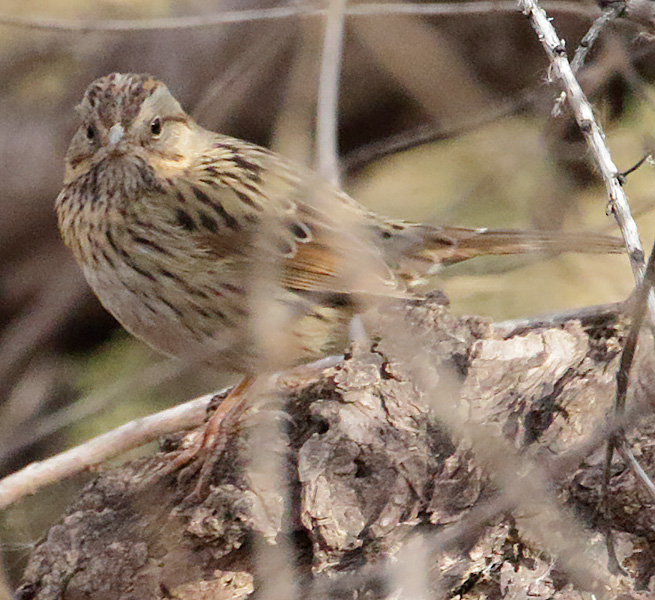
Lincoln's Sparrow
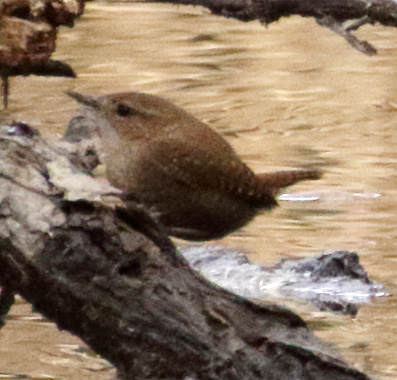
Pacific Wren
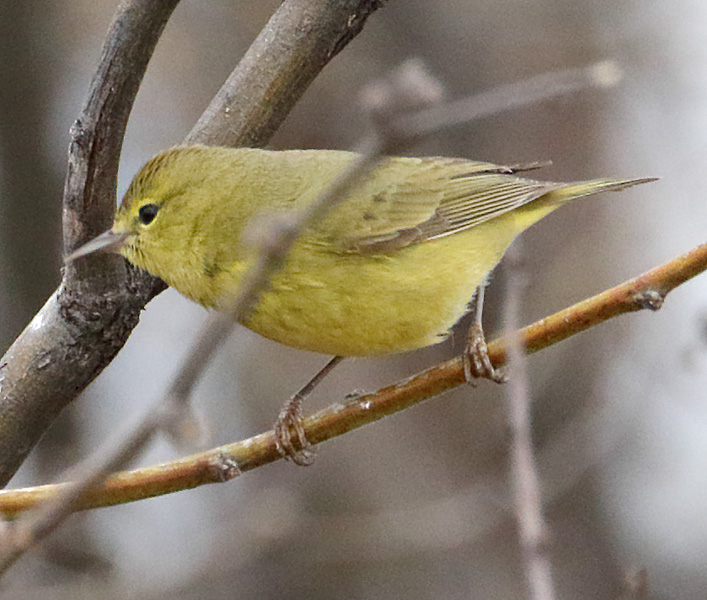
Orange-crowned Warbler
As we ended the trail hike, we saw park rangers carrying yellow tape. They were closing off one of the park trails, as a mountain lion had just been spotted there. We did not see the mountain lion: :-) or :-(, depending on how adventurous we felt that day. We did see an unusual House Finch. I have seen males of this species with orange rather than the normal red coloring, but this one had a red face and orange tail.
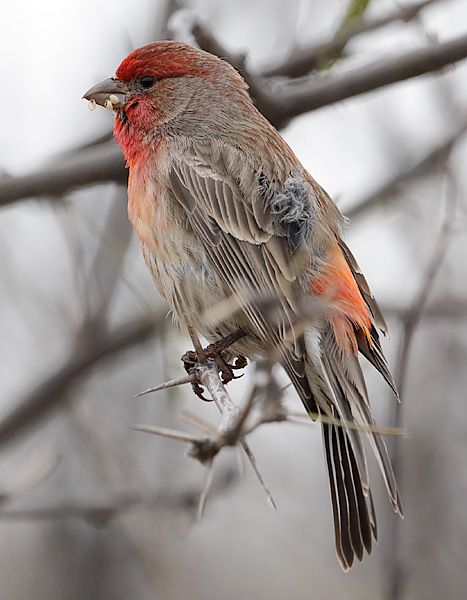
House Finch
We weren't done with Patagonia State Park yet. A Red-naped Sapsucker was reported near the Visitor's Center, and this species was my life bird #629.
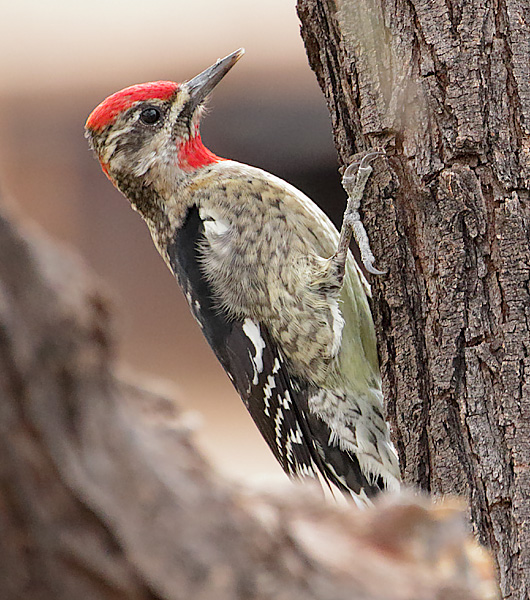
Red-naped Sapsucker
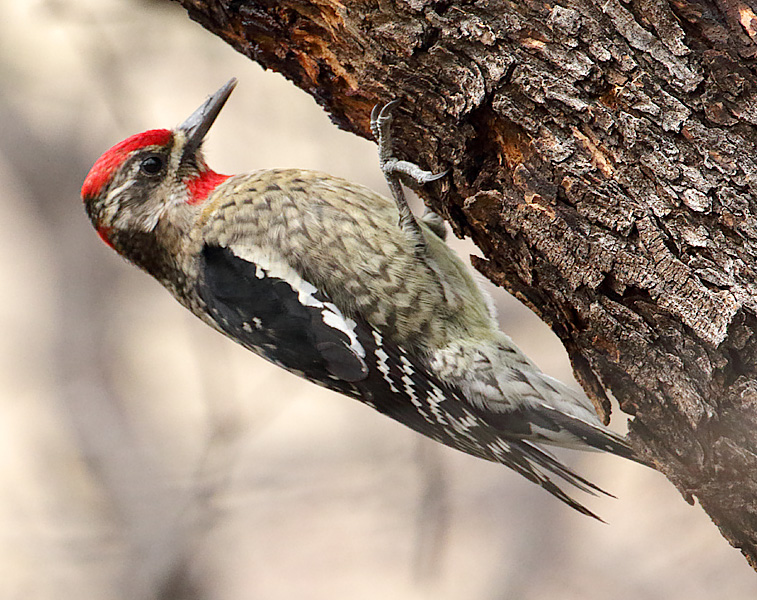
Red-naped Sapsucker
Finally, I spotted a Vireo near the Sapsucker. Plumbeous Vireos are most likely there, and another life bird for me, but this one was the similar-looking Cassin's Vireo that has more yellow-olive on its flanks. If anyone wants to convince me that it was a Plumbeous Vireo, I am open to being convinced!
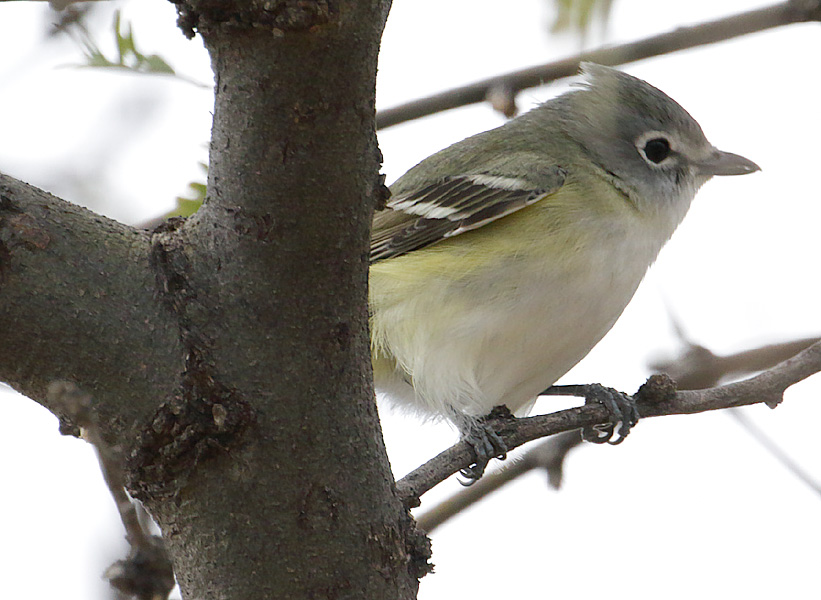
Cassin's Vireo